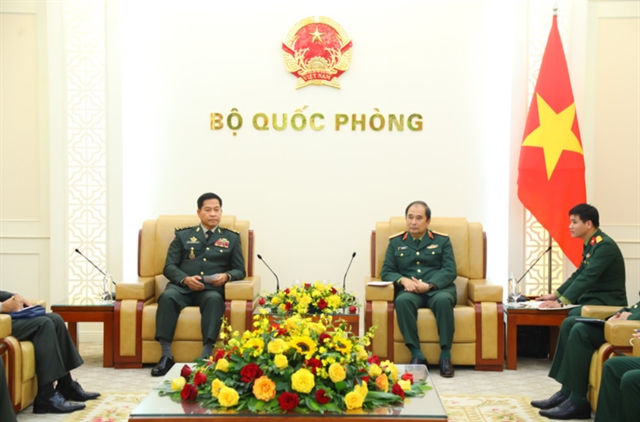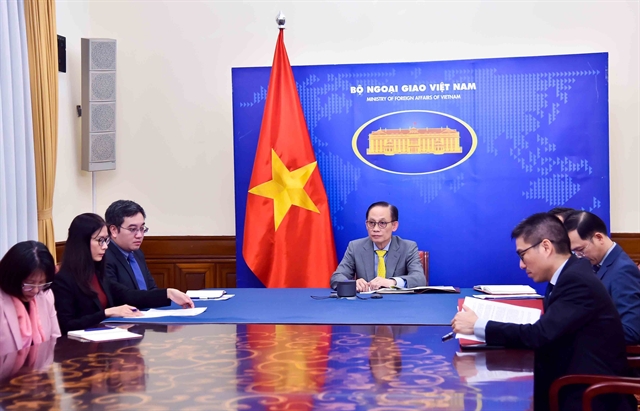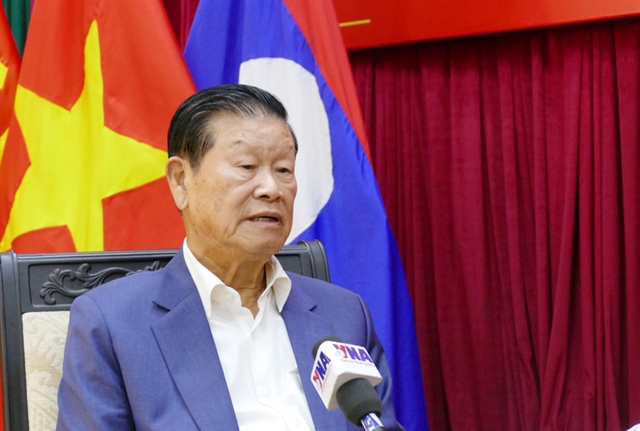 Opinion
Opinion
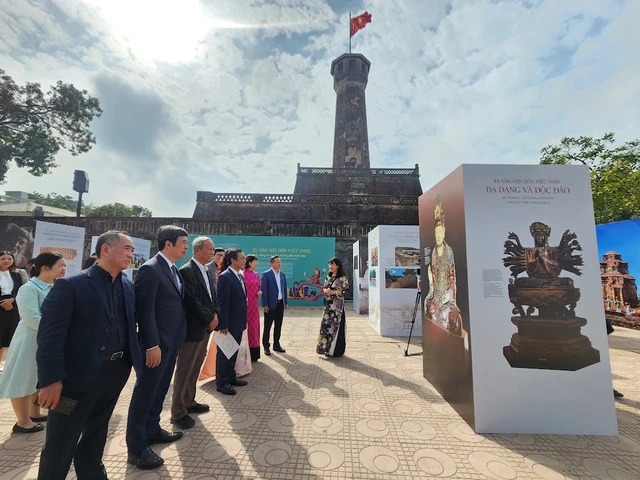
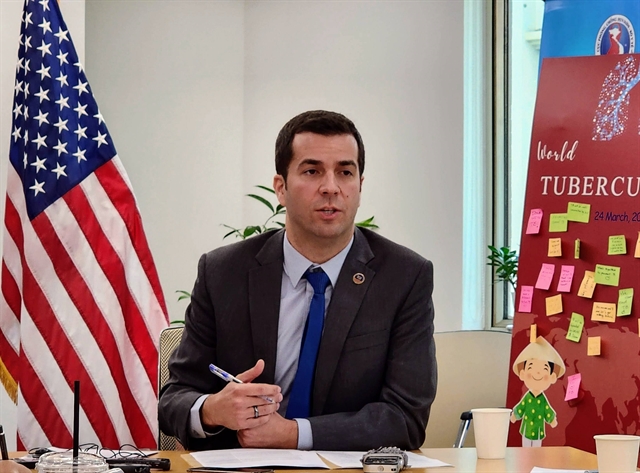 |
| Eric Dziuban, Việt Nam Country Director at US Centers for Disease Control and Prevention (US CDC), spoke to the media. — VNS Photo Trọng Kiên |
The Việt Nam Country Director at the US Centers for Disease Control and Prevention (US CDC), Eric Dziuban, who is nearing the end of his tenure which began in 2021, talked to the media about healthcare cooperation between Việt Nam and the US and how Việt Nam would be able to respond and adapt in the face of new emerging threats.
Can you give us an assessment on Việt Nam's state/public-run diagnosis capacity, with regards to genomic sequencing. For example in the South, COVID strains or mpox are confirmed in the Oxford University Clinical Research Unit in HCM City, in the North, maybe it's the National Institute Of Hygiene And Epidemiology? What can US CDC in Hà Nội and the ASEAN regional office can do to help us upgrade that capacity?
Genomic sequencing, this is actually been a priority for us in the last couple of years, especially since COVID.
I think you all know that Việt Nam and the United States signed a Comprehensive Strategic Partnership last September, when President Biden came, met with the Vietnamese Party General Secretary and they agreed on a plan for a upgraded partnership between the countries to go forward.
For the health plan with many specific goals that the countries want to work on together, it mentions genomic sequencing and the US CDC will work to help Vietnamese public hospitals and Bạch Mai Hospital in Hà Nội in particular, to be able to perform this important laboratory work.
The bad news is the equipment to do this kind of work is extremely expensive.
But the good news is, the US Government during COVID was able to donate some of that equipment through the Department of Defence to Bạch Mai Hospital. Other good news is this very hi-tech equipment doesn't just work on one type of disease, one virus at a time. It was useful for COVID. Now it will be used to do the genomic sequencing for things like mpox and other viruses.
US CDC does a lot of training for these machines. It's complicated laboratory science, but you have strong laboratories in this country that are able to do this now and we look forward to seeing an increasing number of people with this skill set in Việt Nam, so that any part of the country will one day have this capability to do these diagnostics.
So for me, personally, this is a clear example where just in the short time a few years I was in the country, I saw economic progress, clear progress on an important goal. And it's always exciting when you get to witness something like that.
What are your personal plans to keep promoting the medical cooperation between two countries when you end your tenure as country director, especially as Việt Nam and US celebrate 30th anniversary of relations next year?
The 30th anniversary between Việt Nam and the US is going to be a very special time next year, and I'm sad I won't be here personally to witness it, because I think it will be a real opportunity to look and see how far the relationship has come and how strong it is right now. And that's a pretty amazing thing in the world today to see that kind of progress over what's really a short time.
I'm proud that health is a central part of that partnership and it's been a part since the very beginning, when there was no treatment for HIV available for people who were suffering, we worked together on that. And then we collaborated during the H5N1 outbreak in 2005.
The 30-year anniversary will be an opportunity to look back and see everything that's been accomplished, but also to look forward and see that there's still a lot of opportunity to keep working together on our shared health goals and we know that these are priorities for both countries and that diseases don't stay in one country. They spread and they become global very quickly, like what we saw with COVID-19.
So this work we're doing together, it makes Việt Nam stronger and safer. It makes America stronger and safer. It really helps the whole world, the whole population and so our leaders in both countries recognise that, and that's why this field continues to get priority.
The upgrade to Comprehensive Strategic Partnership is a very strong signal to the top levels of both leaderships about how much potential there is for us to continue to grow our health partnership, the seriousness of what we're doing together.
It doesn't come with a cost. It's not something that is balanced against other interests. It's something that is creating good for Vietnamese people and American people and the relationship. And the more people that see that, the more support we can get to continue this work.
After I leave Việt Nam, I will come back to the headquarters in Atlanta, and work at the global health centre. From that position, I'll have many opportunities to highlight the success that we're having here and help make sure that our agency in headquarters is supporting the work that happens in Việt Nam.
What do you think are the biggest health threats facing Việt Nam right now?
It's impossible to know for certain. I would say the rapid change in disease threats is the biggest threat, because the diseases and the risk change so quickly, and the systems have to be ready to adapt quickly as well. Otherwise, we're not prepared.
COVID was a disease unknown to the entire world and look how quickly it spread to every single country. So we have to be ready for unknown threats and have systems that will be able to quickly adapt when something new comes along.
One of the most important things Việt Nam is doing right now to be prepared for that is developing its own Việt Nam National CDC, which will be a part of the Ministry of Health and they can really focus on being prepared for threats like this.
We're supporting Việt Nam with the development of the national CDC and all these other programmes like laboratories, emergency operation centers, public health workforce, those will be even stronger when they're part of one public health agency. They can really make sure the nation is prepared for any threat.
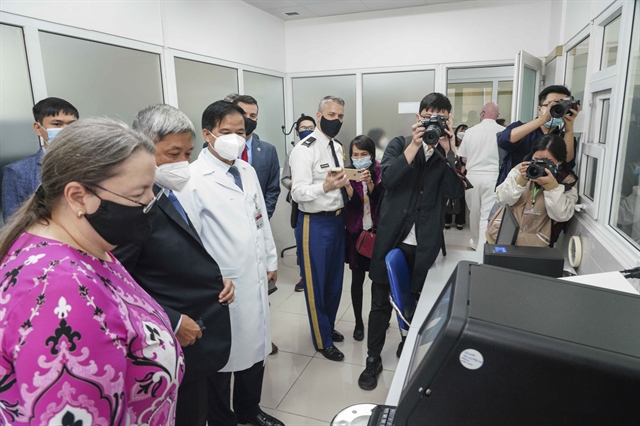 |
| US donates a lumina DNA sequencer, funded by the US Department of Defence, to Bạch Mai Hospital in Hà Nội in November 2021. — Photo from the US Embassy in Hà Nội |
How do you assess Việt Nam's response capacity to emerging health threats?
One of the things that we saw in Việt Nam, and the whole world saw really, during COVID-19, was that Việt Nam has strong public health systems and they have acted very quickly, and especially in the first 16 months of the pandemic, kept an amazing amount of control over the spread of the virus in this country.
Contact tracing, quarantine and testing regimes were very strong, and once the vaccines finally arrived, Việt Nam was quick to get people vaccinated.
Something that we learned in Việt Nam is similar to a lot of countries is that the preparedness is not equal across all provinces/cities.
We know it's important to have strong local resources available for different cities and areas, but also that there's a way to support provinces that don't have as many resources of their own.
I was impressed to see how other health programmes were used very effectively to fight COVID. For instance, hospitals that were developed for patients with tuberculosis were quickly transformed into places for COVID patients.
But of course, many of the routine health services were disrupted during COVID and now one of the main goals is to get those back to where they need to be, things like the rates of childhood vaccination for diseases like polio and measles, we need to reduce gaps so that people continue to be protected from those threats as well.
We saw very strong efforts from local health workers to make sure people were still getting their services. I think especially I see a lot of what happens in the HIV programme. It was amazing how nurses from local clinics would go far out of their way to reach people with their medicine when the lockdowns were happening.
How can the US CDC help Việt Nam in dealing with diseases associated with rapid economic growth such as obesity and diabetes?
When countries are making fast economic progress, they start to see wonderful results in some of the disease threats of their past – things like malnutrition, things like children dying from pneumonia or diarrhea – those go down, but other diseases start to get worse.
So I think what Việt Nam can learn from other countries who have experienced this previously, is which policies can be very effective so that the risk of those diseases and the prevalence of these conditions can be controlled.
So as a country gets more availability of high-calorie foods, very sugary foods, policies that encourage healthy eating are going to reduce some of the chronic issues like diabetes and heart diseases.
But there are other areas where we know that developing economies start seeing health problems, including more traffic accidents when you have more vehicles on the road, more air pollution when you have more industrial development and more smoking when people have money for cigarettes.
I bring up these areas because these are specific places where we know that good public health policy can have strong health benefits.
What we often see is that a policy can be very cost-effective at the same time, and $1 spent on preventing things like motor vehicle accidents or smoking can lead to many dollars saved with reduced medical costs and losses of life.
What is the thinking behind putting the CDC ASEAN regional office in Hà Nội? Do you think the next pandemic could start in this region or in China, personally?
That decision was made by very high levels of our government because of the strengthening relationship and that the US and Việt Nam are continuing to have more and more areas of cooperation.
Of course, it's possible that the next pandemic could start in Southeast Asia. There's a large population here. We know there are emerging disease threats here, just like they are in all the other parts of the world.
All of us in public health are working really hard to prevent that. We don't want the next major disease emergency to come from this part of the world. We're trying to make it so we can very rapidly respond when something is wrong and contain it before it becomes an international, or worse, a global problem.
When a new threat comes, that's not the time you want to be starting a partnership. You don't want to be introducing yourself when you already have an emerging threat. This is why it's so important that we already have those established, trusted partnerships, so that when new challenges come, we're ready to jump in immediately and stop them before they become a threat to everyone. — VNS

